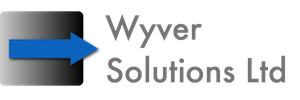Instructions
- Use arrow keys or swipe to navigate
- Press ‘f’ for fullscreen view
- Press ‘s’ to see the speakers’ notes
- Press ‘o’ to see the outline
- View printable version
Created by Mark Berthelemy / Wyver Solutions Ltd
Based on DSDM Agile Project Framework
Vision Discovery Alpha Beta Live
| Objectives | Outputs |
|---|---|
Just enough detail to test and prioritise an idea |
Vision Board Approval for next stage |
Short personal brainstorm
| Objectives | Outputs |
|---|---|
|
Understand user needs Understand business & technical landscape |
Product Idea User goals and high-level activity map Approval for next stage |
Two pages maximum
|
Summary Objectives Key success metrics Financial drivers Internal stakeholders |
Operational drivers Quality drivers Timescales Customers Potential suppliers |
Risks & issues Assumptions & constraints Features Resource required Costs / revenue & savings |
Workshops
Simple mock ups
Paper prototypes
Plenty of whiteboard diagrams
| Objectives | Outputs |
|---|---|
|
Build a working prototype Test design approach Test technologies Form a team Understand beta requirements |
Working basic system, with limited functionality User story map Plans for beta & live service Understanding of legacy systems Analysis of user needs research Approval for next stage |
Built in HTML
Using a standard code library
Or using a tool such as Framer
A small core team
of makers and and stakeholders
led by the product owner
rapidly iterating solutions
and demonstrating each iteration
| Objectives | Outputs |
|---|---|
|
Build a fully working service Test with users Iterate until it's ready to go live |
A working end-to-end service A product backlog A user testing plan Accurate metrics to monitor KPIs Approval for next stage |
A product owner (or team of owners)
leading a team of developers, designers,
and other specialists
rapidly iterating solutions
and testing each iteration with users
| Objectives | Outputs |
|---|---|
|
Meet security & performance standards Configure analytics to monitor KPIs Plan transition or integration of existing services |
An operational service An operations manager Operational support in place Process to continually improve |
Scrum Alliance: Characteristics of a product owner
Ideally co-located team - as small as possible
Remote teams will need a permanently open channel
Shared communication / documentation systems across the whole team
Each sprint sets up the next one with all the information it needs
Tasks to be included in each sprint are chosen by the product owner
Sprints always end with a retrospective to identify process improvements
… so that analysts know what is essential for the developers to work from
… so that developers know what to build, and how it will be tested
… so that testers know what should be tested
… so that the product owner knows what to expect
The criteria that a user story must meet before being accepted into the next sprint
Activities required to complete a backlog item (example):
| Page | Credit |
|---|---|
| Product Vision Board | Roman Pichler |
| Output - user goals & high-level activity map | Thoughtworks.com |
| Output - user story map | Thoughtworks.com |
| Output - mockups | Balsamiq |
| Output - product backlog | Barry Overeem |
